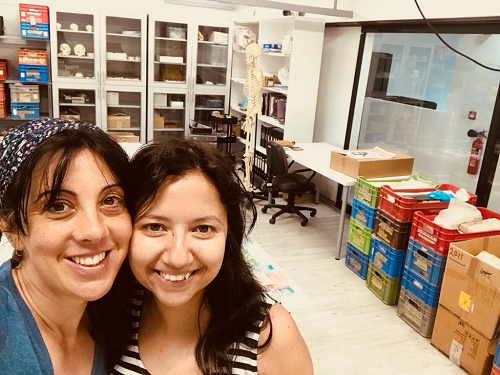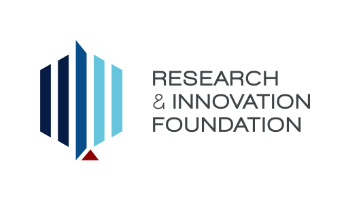Where do we stand after one month?
People in Motion launched on the 1st of December 2018. The past weeks have been particularly busy with meetings, planning fieldwork, finalising study permits and even some initial data collection. Early December focused on the coordination of activities between People in Motion and the ERC-funded Sicily in Transition (SICTRANSIT - ERC action number 693600) project. SICTRANSIT aims at exploring the changes of demography, agricultural production and trade in Sicily through the Byzantine, Kalbid, Norman and Swabian regimes. In this context, ancient DNA and dietary isotopic analysis have been planned on skeletal remains across the island. The SICTRANSIT team based at the University of York (PI: Prof. Martin Carver, Team: Dr. Michelle Alexander, Ms Aurore Monnereau and Ms Alice Ughi) had a series of meetings with Efi Nikita during which optimal sampling strategies were agreed so that the different, yet complementary, research questions posed by People in Motion and SICTRANSIT are addressed. In addition, the dental morphology of the teeth already exported in York was examined and additional sampling has been planned. Meetings were also held with our colleague responsible for the strontium isotopic analysis, Dr Petrus le Roux, in order to discuss the best sampling strategy for our assemblages across the Mediterranean. Last but not least, the final study permits from Greece and Cyprus have been issued. 2019 is anticipated to be a very busy year!
Where do we stand after six months?
 2019 has started in a particularly busy mode! Data collection of dental non metric traits was completed for the material from St George’s Hill, with the invaluable help of Archaeological Officer Aspasia Georgiadou. In addition, teeth to be sampled for dental calculus and strontium isotopes have been separated from the remaining assemblage and photographed. Formal permit for their analysis will be requested by the Department of Antiquities at the end of summer, once macroscopic data collection has progressed in the other People in Motion sites. Work also started on the second Cypriot assemblage, Amathus. As this assemblage had not been studied anthropologically in the past, several weeks were dedicated to cleaning and sorting the skeletal remains, and the osteobiographic analysis will begin shortly. Given that the Amathus material comprises commingled and often burned remains, systematic work has also started towards producing two STARC protocols, one for the study of commingled human skeletal remains and another for the study of burned/cremated bones. Both of these resources are anticipated to be made openly accessible to the academic community by the end of summer 2019. The end of March and half of April were dedicated to data collection from Volubilis, Morocco. Forty-eight skeletons were examined macroscopically for markers of demography, pathology, activity, diet, as well as metric variation and nonmetric traits. Data collection took place in close collaboration with the Moroccan PhD study Ms Imane Qouti, who worked in the Volubilis Archaeological Project as a trainee and had the opportunity to gain valuable hands-on experience in osteological analysis beyond dental anthropology, which is her field of specialisation. Dr Anita Radini visited Cyprus in early May to present her Wellcome Trust-funded project ‘A Taste of Hard Work’, and to discuss preliminary results from Bulla Regia, which is an assemblage included both in People in Motion and A Taste of Hard Work. During her visit, we travelled across Cyprus to become acquainted with local biodiversity and collected plant samples in order to start setting up a microfossils reference collection. The background and aims of People in Motion were presented to STARC members as well as to members of the Fitch Laboratory, British School at Athens. Finally, in mid-March The Cyprus Institute hosted the sCYence Fair, a large public outreach event in the context of which a lecture was given on human mobility in the past deduced from human skeletal remains and a number of hands-on osteoarchaeology laboratory activities were organised.
2019 has started in a particularly busy mode! Data collection of dental non metric traits was completed for the material from St George’s Hill, with the invaluable help of Archaeological Officer Aspasia Georgiadou. In addition, teeth to be sampled for dental calculus and strontium isotopes have been separated from the remaining assemblage and photographed. Formal permit for their analysis will be requested by the Department of Antiquities at the end of summer, once macroscopic data collection has progressed in the other People in Motion sites. Work also started on the second Cypriot assemblage, Amathus. As this assemblage had not been studied anthropologically in the past, several weeks were dedicated to cleaning and sorting the skeletal remains, and the osteobiographic analysis will begin shortly. Given that the Amathus material comprises commingled and often burned remains, systematic work has also started towards producing two STARC protocols, one for the study of commingled human skeletal remains and another for the study of burned/cremated bones. Both of these resources are anticipated to be made openly accessible to the academic community by the end of summer 2019. The end of March and half of April were dedicated to data collection from Volubilis, Morocco. Forty-eight skeletons were examined macroscopically for markers of demography, pathology, activity, diet, as well as metric variation and nonmetric traits. Data collection took place in close collaboration with the Moroccan PhD study Ms Imane Qouti, who worked in the Volubilis Archaeological Project as a trainee and had the opportunity to gain valuable hands-on experience in osteological analysis beyond dental anthropology, which is her field of specialisation. Dr Anita Radini visited Cyprus in early May to present her Wellcome Trust-funded project ‘A Taste of Hard Work’, and to discuss preliminary results from Bulla Regia, which is an assemblage included both in People in Motion and A Taste of Hard Work. During her visit, we travelled across Cyprus to become acquainted with local biodiversity and collected plant samples in order to start setting up a microfossils reference collection. The background and aims of People in Motion were presented to STARC members as well as to members of the Fitch Laboratory, British School at Athens. Finally, in mid-March The Cyprus Institute hosted the sCYence Fair, a large public outreach event in the context of which a lecture was given on human mobility in the past deduced from human skeletal remains and a number of hands-on osteoarchaeology laboratory activities were organised.
We are almost half-way through!
Notable progress has been made in data collection, experimental work, generation of databases for Mediterranean bioarchaeology and strontium isotopes analysis, and refinement of existing biodistance methodologies! Macroscopic data on biodistance markers but also general osteobiography has now been collected from a) multiple Sicilian skeletal assemblages dating from the 5th to the 13th c. AD (December 2018), b) Saint George’s Hill in Cyprus (February 2019), c) Bulla Regia in Tunisia (September 2019), d) Volubilis in Morocco (April 2019), e) Agios Vasileios Pelekanadas and Agios Nikolaos Mavromati in Greece (May 2019), f) Eleftherna in Greece (June 2019), g) ancient Messene in Greece (September 2019), and h) Christianoi in Greece (November/December 2019).
Dr Giuseppina Mutri was appointed in February 2020 as Palaeobotany prost-doctoral fellow in order to perform the microscopic analysis of dental calculus (mineralized dental plaque) to identify individuals with nonindigenous inclusions, hence potential nonlocals. So far, we have collected around 100 modern plant species, representative of the Cypriot flora, and Giuseppina is currently processing them in order to put together a starches reference collection. Work on the phytoliths reference collection will have to wait until our labs properly reopen following the covid19 pandemic, as does fieldwork for the collection of more modern plants.
For the strontium isotope analysis, we have finalized the sampling procedure both for the archaeological material and for establishing the local bioavailable strontium isotope values per site. An extensive comparative database containing all published strontium isotope values for countries across the Mediterranean Sea has been put together and includes over 8,500 entries! Very interestingly, we engaged in a small experimental project in collaboration with Petrus LeRoux. In summary, we compared the Sr isotope values obtained from modern plants that had been burned in an open fire against those obtained from the same plants burned in a controlled laboratory setting, and found that the results are almost identical. These results suggest that when fieldwork is conducted in countries whereby export permits for modern plants are difficult to obtain within the timeline of the planned fieldwork season, it is acceptable to burn the plants in an open fire and export the ash, which does not require any special permission. Following this approach, as well as by collecting modern snail shells, we have now mapped the bioavailable Sr isotopes in multiple geological zones in Tunisia. The same approach will be adopted in Morocco, Sicily, Greece and Cyprus as soon as covid19-related travel restrictions are lifted.
A lot done and a lot left to do!
Are we really done?
People in Motion was completed in May 2022. At the start of the project, to our knowledge, there were merely six bioarchaeological case studies on Byzantine mobility. People in Motion has already resulted in one publication regarding Byzantine mobility in Cyprus; two more papers, focused on mobility patterns in Late Antique Tunisia and medieval Sicily, respectively, are almost ready for submission, and one final paper, on Byzantine mobility in Messene, Greece, is under preparation. Therefore, People in Motion will result in a considerable amplification of currently available bioarchaeological studies on the key topic of Byzantine mobility.
In exploring human mobility, People in Motion has also made important contributions to the refinement of existing biodistance methods. We published a review paper on the state of the art of biodistance analysis in the Eastern Mediterranean, and we advanced the statistical treatment of dental nonmetric traits in the estimation of biodistances, publishing three methodological papers in leading international journals.
The dental calculus research identified various types of debris in each assemblage but nothing that could be securely linked to mobility. Given the rather poor results of this approach in the context of the People in Motion objectives, we maximized outputs but focusing on the creation of an open access reference database for plant microremains, especially starches, for Cypriot flora. This database currently contains 125 species and will be continuously expanded. Moreover, we published a review paper on how dental calculus data should be effectively integrated with human osteoarchaeological information, a practice rarely seen but of key importance in the study of past mobility, diet, occupation, and other aspects.
Strontium isotopic analysis was the key method we used to explore human mobility in this project. Our colleagues at the University of Cape Town analysed an impressive number of samples: 251 human enamel samples and 75 plants and snails to establish much needed local baselines. While trying to interpret the strontium isotopic results from the various assemblages under study, the problem of equifinality became particularly evident, that is, several parts of the world may have the same Sr isotopes range, thus it is not possible to know the point of origin for the individuals examined. In an attempt to approach this issue, we put together SrIsoMed (https://srisomed.emmebioarch.com/), an open access database of all published strontium isotopic data in countries that have a shoreline on the Mediterranean. The database currently contains 11,400 values and will be continuously expanded.
Finally, in an effort to maximize further the outputs of this project, we created a bibliographic database for bioarchaeological studies in the Eastern Mediterranean and Middle East (Bi(bli)oArch, https://www.biblioarch.com/). Moreover, we prepared four open access best practice guides for the study of human skeletal remains, emanating from the challenges we faced during the macroscopic data collection and analysis conducted in People in Motion: BASIC GUIDELINES FOR THE EXCAVATION AND STUDY OF HUMAN SKELETAL REMAINS, AN INTRODUCTION TO THE STUDY OF BURNED HUMAN SKELETAL REMAINS, EXCAVATION AND STUDY OF COMMINGLED HUMAN SKELETAL REMAINS, and INTRODUCTION TO STATISTICS USING R. Finally, we created two open access digital books for children and educators: ARCHAEOLOGICAL SCIENCE CLASSROOM ACTIVITIES (available in Greek, English and Arabic) and BARE BONES: OUR ANCESTORS’ BONES HAVE A LOT TO SAY.
So, are we really done?
Not remotely...We are currently finalising the MicroPlant database before we can make it open access. Another three papers/book chapters are under review, focused on kinship patterns, presenting the SrIsoMed database, and refining further the methodology for biodistance analysis. Five more papers are under preparation, exploring mobility in Tunisia, Sicily and Greece, as well as synthesizing all data and exploring issues of consilience among different lines of evidence regarding palaeomobiity. Very importantly, two spin-off projects have so far come out of People in Motion: ChemTreat and MetaMobility. ChemTreat is a Cyprus Institute Infrastructure grant aiming at creating an organic sample pretreatment facility for isotopic analysis. At the moment, all instrumentation is in place, all consumables have been purchased and we are in the process of developing quality assurance procedures. The facility should be fully functional by August 2022. MetaMobility is a Research and Innovation Foundation funded project (EXCELLENCE/0421/0376) aimed at performing a large-scale meta-analysis of already published human osteoarchaeological, zooarchaeological and archaeobotanical data on Hellenistic and Roman mobility in the Eastern Mediterranean. As such, it temporally expands the scope of People in Motion towards earlier periods. This project started in April 2022 and has a duration of 24 months.



